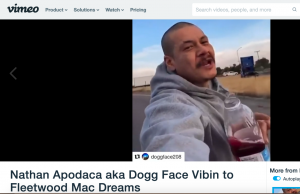After its U.S. debut in August 2018, TikTok quickly became popular with kids for the silly dances and comic facial filters seen in its short cellphone videos.
However, in 2020, citing concerns over access to user data, the Trump administration deemed the Chinese-owned app a national security threat and sought to force a sale of its U.S. operations to U.S. companies. (Oracle and Walmart reportedly remain in negotiations to buy TikTok’s U.S. operations.)
India, meanwhile, has permanently banned TikTok, calling it a threat to the country’s “sovereignty and integrity.” Despite the controversy, TikTok says it has more than 100 million active daily users in the United States alone. And marketers are taking notice. Chipotle, Nike, Skittles, Pepsi and Universal Pictures are among the brands using the app to reach consumers.
In October 2020, Ocean Spray received an unexpected boost from a user-generated TikTok video. After his car broke down, a man in Idaho Falls, Idaho, filmed himself drinking the brand’s cranberry juice while riding a skateboard and listening to the song “Dreams” by Fleetwood Mac.

The clip went viral and Ocean Spray responded by giving the man a new pickup truck.
“This is a platform of the people,” Soam Lall, TikTok’s West Coast lead for global business solutions, said during a Jan. 28 webinar hosted by PRSA’s Dallas Chapter. “We embrace creativity. We embrace storytelling and silliness.”
Lall showed a slide detailing TikTok’s support for the Black Lives Matter organization, LGBTQ people, Asian Americans and Pacific Islanders. In 2020, “We wanted to elevate, prescriptively, these diverse voices,” he said. “That’s who this platform is.”
But contrary to perceptions that TikTok just shows goofy dances to a young demographic, “we are a global platform that speaks to all types of creators,” Lall said.
Unpolished entertainment, not social networking
Users can create TikTok content using tools on the app itself, but marketers accustomed to glossy campaigns might be surprised by the raw quality of the videos.
“One of the great things about TikTok, and the content you will see, is that it is by no means perfect,” Lall said. People are “looking for content that is real, that is relatable, that is raw.”
TikTok is “an entertainment platform, not a social network,” and people use it to lift their spirits, Lall said. “It’s not about brands.” The platform’s “For You” feed is “about discovering things that interest you, outside of your social network.”
Another distinguishing characteristic of TikTok is that the app opens with the sound on, said John Clemens, the company’s brand partnerships manager. The goal is “full-screen escapism,” he said. When people come to TikTok for entertainment, “they’re fully engaged in the content that they’re viewing.”
Music and sound effects can help marketers tell stories and capture attention on TikTok, Clemens said. Brands receive higher engagement levels on the platform when they’re authentic and “create bespoke content. It’s all about feeling native and natural.”
For brands, TikTok “is not about reaching one specific demographic,” Clemens said. “There is a diverse community all over the platform for any niche that you can possibly imagine.”
He recommends that marketers new to TikTok look at what competitors are doing on the app, read comments from users with similar interests and “engage with the community.” Brands can enlist the help of TikTok creators to spark content ideas and kick-start trends, Clemens said. Whether the videos are paid or organic, find your voice and creativity, and “make sure it’s real, lighthearted and entertaining.”
Greg Beaubien is a frequent contributor to PRSA publications.
[Logo credit: tiktok]

